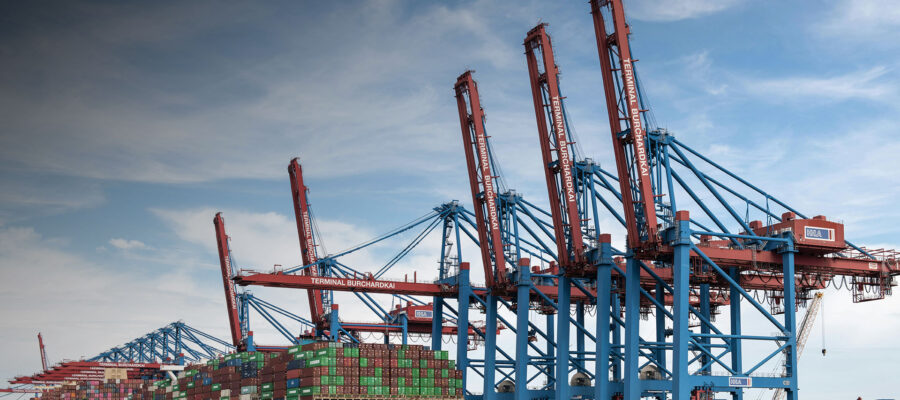This post has already been read 48792 times!
Battle-tested supply chain strategies that work in the real world
In the competitive and high-value world of luxury retail, efficient supply chain management is not just a necessity but a cornerstone of business success. Brands operating in metropolitan hubs such as New York, Los Angeles, and San Francisco face unique challenges, including constrained boutique spaces, fluctuating consumer demands, and high rental costs. This article explores strategies to optimize inventory, streamline logistics, and enhance forecasting accuracy, drawing insights from a real-world project implementation.
The Problem: Balancing Boutique Space and Packaging Standards
Luxury retail outlets prioritize the customer experience, and premium packaging is an essential element of their brand identity. However, this creates a dilemma: while the volumes of products sold may not be as high as in other retail sectors, the space required for high-quality packaging materials can overwhelm boutique storage areas. Some brands may face significant storage issues in their flagship locations, where every square foot of retail space is vital for creating a luxurious ambiance.
Optimizing Inventory and Logistics for Luxury Retail Share on XAdditionally, these brands often source packaging materials from regions like Asia and Europe, adding complexity to supply chain management. The lead times for procurement and the need to align with rapidly changing fashion trends exacerbate storage and inventory challenges. Over-ordering can lead to obsolete materials, while under-ordering risks compromising the customer experience.
Strategic Solutions for Supply Chain Challenges
1. Accurate Demand Forecasting
Effective forecasting is the foundation of successful supply chain management. By analyzing historical sales data, monthly demand patterns, and geographic consumption trends, brands can predict inventory needs with greater precision. As part of the project, implementing machine learning models for clustering and forecasting improved prediction accuracy for 80% of SKUs, with a forecast accuracy of 90-98% for top-performing products.
Key steps included:
- SKU-Level Analysis: Segmenting products by sales volume and focusing on top-performing SKUs that account for 90% of total demand.
- Dynamic Models: Using stochastic inventory management to account for variables like lead time and demand fluctuations.
- Testing and Validation: Running models over three months to refine predictions and ensure reliability.
2. Optimizing Warehouse and Distribution Networks
To minimize freight costs and delivery times, the project focused on optimizing regional hubs. A strategy involving two primary warehouses—one on the East Coast and one on the West Coast—proved effective for managing inventory distribution across the United States. The analysis incorporated factors such as:
- Warehouse Capacity: Ensuring that storage limits align with forecasted demand to avoid overflow.
- Geographic Clustering: Using clustering algorithms to segment retail locations based on proximity and demand.
- Optimal Replenishment Cycles: Establishing reorder points and safety stock levels tailored to each region’s consumption patterns.
3. Implementing Centralized Inventory Management
Centralized inventory control ensured visibility across all retail outlets, enabling better decision-making. Each store’s usage data was tracked in real time, and replenishment was managed centrally to avoid over-stocking or stock-outs. This approach simplified logistics, particularly for high-volume, fast-moving SKUs.
Technological Interventions
1. Integration of Google Maps API for Distance Optimization
To streamline delivery routes, tools like the Google Maps API were utilized to calculate precise distances between warehouses and retail outlets. This enabled the design of cost-effective transportation plans, particularly for high-volume stores in remote areas.
2. Machine Learning for Cluster Formation
K-means clustering and other machine learning techniques were employed to identify demand patterns and group stores into manageable clusters. Fixing warehouse locations as cluster centers allowed for efficient allocation of resources and reduced logistical complexities.
3. Automated Reordering Systems
An automated system was designed to monitor inventory levels and generate purchase orders based on predefined thresholds. For instance, if a particular store’s stock fell below the reorder point, the system would automatically initiate replenishment from the nearest hub.
Results and Lessons Learned
The project’s strategic overhaul of supply chain processes yielded impressive results:
- Improved Forecast Accuracy: Forecasting accuracy for 80% of SKUs increased to 90%, significantly reducing over-ordering.
- Cost Savings: Optimized freight routes and inventory levels minimized transportation and storage costs.
- Enhanced Customer Experience: Stores maintained adequate stock levels of premium packaging, preserving the luxury experience for customers.
One of the key takeaways was the importance of aligning forecasting precision with lead times.
For instance, while the lead time from hubs to retail stores was only two days, procurement from overseas suppliers required three months, necessitating highly accurate long-term forecasts.
Optimizing Inventory and Logistics for Luxury Retail Share on XLuxury Retail Brands Must Balance Efficiency and Excellence
Luxury retail brands must navigate a delicate balance between operational efficiency without compromising brand excellence.
This can be achieved by leveraging advanced analytics, machine learning, and centralized inventory systems. This project, conducted by my colleague and shared with their permission, demonstrated how logistical challenges can be overcome while maintaining a commitment to exceptional customer experiences. As the retail landscape evolves, these strategies will remain integral to driving success in this dynamic industry.
For more insights and strategies on supply chain management, visit the Institute for Supply Management’s resources and education calendar.
About the Authors
Jhalak Agrawal
Jhalak Agrawal is a supply chain professional with a Master of Supply Chain Analytics from Rutgers University and an MBA in Logistics and Supply Chain Management from XLRI. Jhalak’s career journey has spanned impactful projects in inventory optimization, demand forecasting, and logistics efficiency for companies like Colgate-Palmolive and Capri Holdings. Currently, as an Inventory Analyst at Ashley Stewart, Jhalak focuses on enhancing operational accuracy and streamlining supply chain processes. Jhalak is passionate about leveraging analytics to solve complex supply chain challenges and drive meaningful results.
Shiv Agarwal
Shiv Agarwal is a passionate professional in supply chain and data analytics with a Master’s in Management Science from Rutgers Business School and an MBA in Logistics and Supply Chain Management from XLRI. Shiv’s experience includes managing over 5,000 SKUs and optimizing inventory through ML-driven forecasting tools during an internship with Trident Group, which improved accuracy by 15% and reduced excess inventory costs by 12%. At Rutgers, Shiv worked on a Demand Planning and Network Optimization project for Chanel, optimizing warehouse networks and driving efficiency. Currently, as a Planning Analyst at SS White/Shukla Medical, Shiv develops innovative tools, enhance costing transparency, and optimize plant capacity through machine learning.
- Optimizing Inventory and Logistics for Luxury Retail - January 24, 2025



